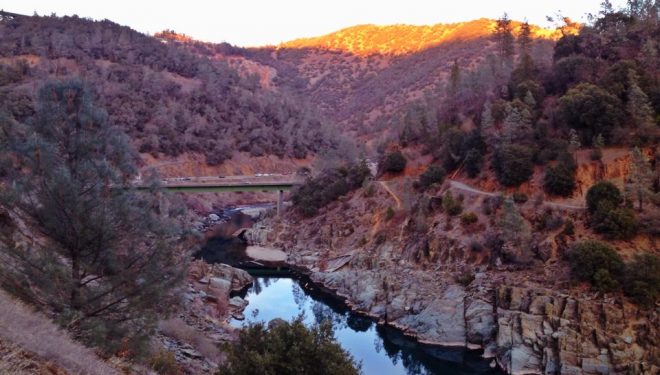
By Helen Byrens and Rebecca Andrews
The U.S. Court of Appeals for the Ninth Circuit recently granted a summary judgment affirming that the government had not been shown to have violated the permitting requirements or water quality objectives of the federal Clean Water Act (CWA). [Central Sierra Environmental Resource Center v. Stanislaus National Forest, 30 F.4th 929 (9th Cir. 2022).
Background
As an “authorized state,” California implements the state Porter-Cologne Water Quality Control Act (Porter-Cologne) in lieu of the CWA. The state acts through the State Water Resources Control Board (State Water Board) and its nine Regional Water Quality Control Boards (Regional Boards) to issue permits, called Waste Discharge Requirements (WDRs) or waivers from the permitting requirements. In 1981, the State Water Board signed a Management Agency Agreement (MAA) with the United States Forest Service (Forest Service). The MAA formally recognized the state’s designation of the Forest Service, pursuant to § 208(c) of the Clean Water Act, as the management agency for all activities on National Forest System lands, with responsibility to implement provisions of water quality management plans. In the MAA, the State Water Board agreed that the practices and procedures set forth in the Forest Service 208 Report constitute sound water quality protection and improvement on Forest Service lands, except with respect to certain enumerated issues. As to the enumerated issues, additional “Best Management Practices” (BMPs) were needed.
The Forest Service has issued permits allowing livestock grazing in three allotments within the Stanislaus National Forest that are at issue here—the Bell Meadow, Eagle Meadow, and Herring Creek Allotments (collectively: BEH Allotments). In March 2017, two environmental plaintiffs sued the Stanislaus National Forest, the Forest Service, and the then-Forest Service Supervisor in her official capacity (together: Government), claiming that the Government violated the CWA in two respects. First, plaintiffs alleged that the Government made new or modified discharges of waste without obtaining WDRs or a waiver of the WDR requirement. Second, plaintiffs alleged the Government’s permits for livestock grazing on the BEH Allotments caused violations of state water quality standards for fecal coliform bacteria.
Plaintiffs’ suit sought injunctive relief modifying the grazing arrangements in the BEH Allotments. As a result, the district court allowed the holders of the relevant grazing permits, together with several interested organizations to intervene as Defendants. After the parties filed cross-motions for summary judgment, the district court granted summary judgment to the Government. After entry of final judgment, Plaintiffs timely appealed.
The Ninth Circuit’s Decision
The issue presented on appeal was whether the Government violated the CWA by discharging waste without first obtaining either WDRs or a waiver. The court noted that the 1981 MAA specifically addressed the obligation to obtain WDRs or a waiver. The 1981 MAA provided that implementation of BMPs constituted compliance with the requirement to apply for and obtain WDRs. Thus, the court found the MAA to clearly establish that in lieu of filing reports and obtaining WDRs, the Forest Service can implement agreed-upon BMPs and the provisions of the MAA.
Plaintiffs asserted, however, that the State Water Board superseded the 1981 MAA in 2004, when it adopted the Policy for Implementation and Enforcement of the Nonpoint Source Pollution Control Program (2004 NPS Policy). The 2004 NPS Policy provided that all current and proposed nonpoint source discharges, such as discharges from grazing operations, must be regulated under WDRs, waivers of WDRs, or some combination of administrative tools. The court did not find the argument compelling as the 2004 NPS Policy expressly acknowledged management agency agreements, such as the MAA, as operative. Because of this, the court concluded that the plaintiffs failed to show that the Government violated the permitting requirements of the CWA and affirmed the district court’s grant of summary judgment on this issue.
The court next considered and rejected plaintiffs’ argument that the Government violated the CWA by authorizing livestock grazing which caused runoff leading to fecal coliform levels in local waterways in excess of the relevant water quality objectives. The court found this argument failed because water quality objectives do not directly apply to individual dischargers. Instead, these objectives reflect standards that regulators must take into account in fashioning the requirements that do apply to dischargers, such as WDRs and waivers. The court noted that the plaintiffs had not cited any law that makes a discharger directly liable for violating a water quality objective that is not contained in applicable WDRs, waivers, or other regulatory tool.
For the foregoing reasons, the court found the Government had not been shown to have violated the CWA, and that the Plaintiffs failed to contend that the Government violated any prohibition contained within a regulatory mechanism. The court affirmed the district court’s grant of summary judgment to the Government.
Conclusion and Implications
This case highlights the challenges to bringing a successful citizen suit against a nonpoint source discharger. It also serves as a reminder that water quality objectives are not directly applicable to dischargers without an additional regulatory mechanism to implement the objective. The Ninth Circuit’s opinion is available online at:
http://cdn.ca9.uscourts.gov/datastore/opinions/2022/04/08/19-16711.pdf



